Unit - 1
Introduction and Index Properties
Key Takeaways:
Geotechnique is the application of laws of mechanics and hydraulics to engineering problems dealing with sediments and other unconsolidated accumulations of solid particles produced by the mechanical and chemical disintegration of rocks regardless of whether or not they contain an admixture of organic constituents.
1. Foundation design:
2. Pavement Design:
3. Design of Earth Dam
4. Earth Retaining Structure:
5. Design of Embankments:
6. Design of Underground Structures:
Key Takeaways:
Thus, various applications of geo-technical engineering are as follows:
1. Single grained structure:
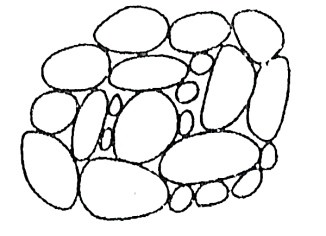
Fig.1.1: Single grained structure
2. Honeycomb structure:
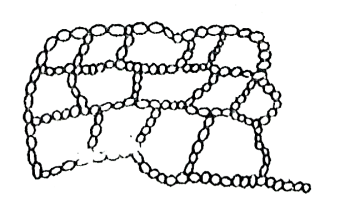
Fig.1.2: Honeycomb structure
3. Flocculent structure:
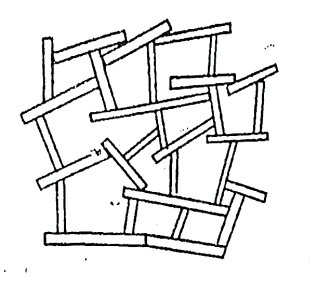
Fig.1.3: Flocculent structure
4. Dispersed structure:
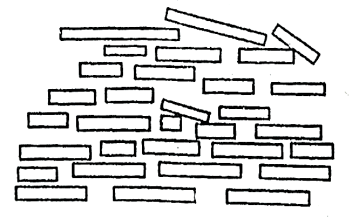
Fig.1.4: Dispersed structure
5. Composite Soil Structure:
1.Coarse grain skeleton:
2.Cohesive matrix:
Key Takeaways:
The following types of soil structure are generally recognized
On the bases of climatic conditions, topography and geology of their formation, major soil deposits of the India can be broadly divided into the following groups,
1. Marine deposits:
2. Black cotton soil:
3. Laterites and lateritic soil
4. Alluvial deposits
5. Desert soils
6. Boulder deposits
Key Takeaways:
On the bases of climatic conditions, topography and geology of their formation, major soil deposits of the India can be broadly divided into the following groups,
1.Coarse Grained Soil:
Grading:
Grain shape:
Colour:
Strength and structure:
Presence of fines:
2. Fine Grained Soil:
Dry strength test:
Dilatancy Test:
Toughness Test:
Organic silt or clay:
Other identification tests:
Key Takeaways:
Field tests and field identification is thus a great tool in soil engineering. The soils to be identified in field may be coarse grained soil or fine-grained soil.
Site investigation and subsoil explorations are necessary for following purpose:
1. For finding Index properties:
2. To determine bearing capacity for foundation design:
3. To know stratification:
4. For seepage control:
5. For treating problem soils:
(a) The quick sand condition
(b) The black cotton soil
6. For enhancing properties by compaction and stabilization:
Key Takeaways:
Site investigation and subsoil explorations are necessary for following purpose:
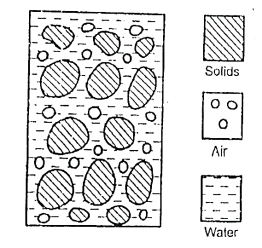
Fig.1.5: Natural soil
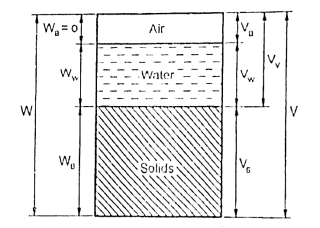
Fig.1.6: Partially saturated soil
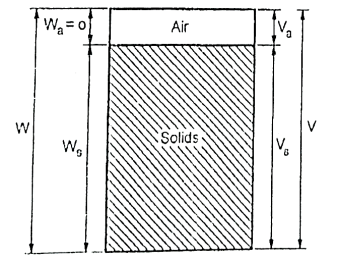
Fig.1.7: Dry condition
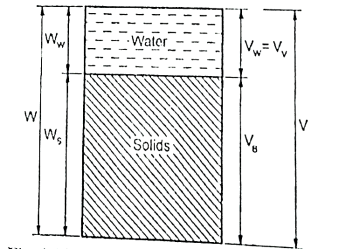
Fig.1.8: Saturated condition
Ww=Weight of water
Ws =weight of soils
V =total volume of soil mass
Va =volume of air
Vw =volume of water
Vv =volume of voids
Vs =volume of solids
Total weight, W=Ws+Ww+Wa
Wa=0
∴W=Ws+Ww
Total volume, V= Vs+Vv= Vs+Va+Vw (3 phase system)
W=Ws
V=Vs+Va (2 phase)
W=Ws+Ww
V=Vs+Vw (2 phase)
Key Takeaways:
The soil mass in general is a three-phase system composed of soil, liquid and gaseous matter. The solid phase comprises of mineral, organic matter or both. The mineral portion consists of particles of different size and shapes. The organic fraction is the plant and animal residue which may be present in various stages of decomposition.
1) Properties of soil mass
2) The properties of individual particle size.
1) Properties of soil mass:
2) The properties of individual particle size:
Key Takeaways:
The main index properties are: Particle size distribution, density index, consistency etc. The index property gives some information about the engineering properties.
Water Content Determination:
Following methods are used to find the water content
1) Oven drying method
2 )Calcium carbide method
W = 
W=  x 100 %
x 100 %
Determination of Consistency limit:
Determination of Liquid Limit:
Following are the two Methods used for the Determination of Liquid Limit in the Laboratory
By Casagrande's method (IS 2720 part 5-1985):
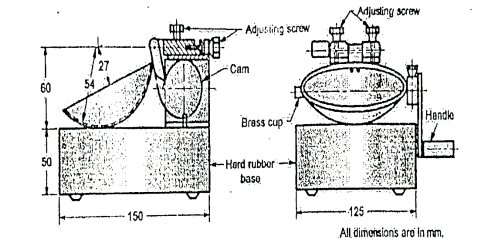
Fig.1.9: Liquid limit apparatus
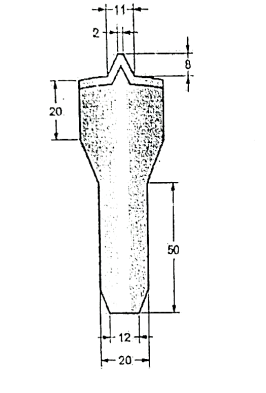
Fig.1.10: Casagrande tool

Fig.1.11: ASTM tool
W₁-W₂ = If
Where w1xw2, are the water contents corresponding to blows N1 and N2. If is the slope of line and it is called the flow index. The line is called the flow curve.
Determination of Plastic Limit: (IS-2720 part 5-1985)
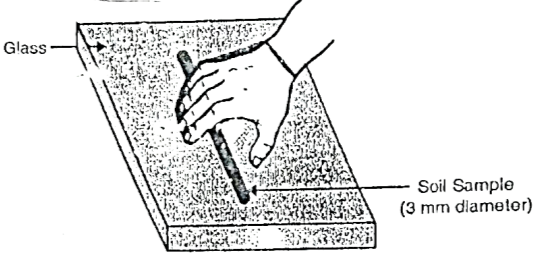
Fig.1.12: Plastic limit determination

Fig.1.13: Plastic limit determination
Determination of Shrinkage Limit: IS-2720, Part 6-1972 Reaffirmed 1975
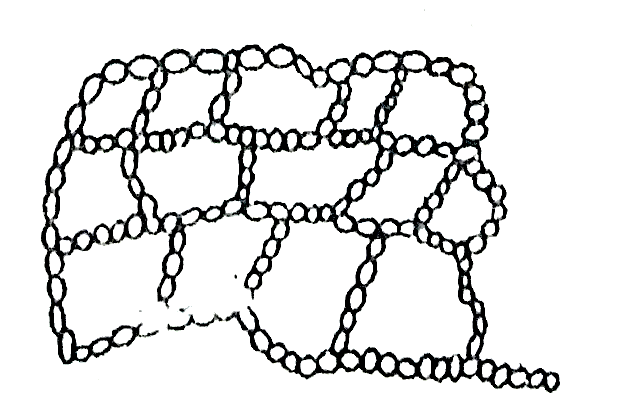
Fig.1.14: Shrinkage limit apparatus
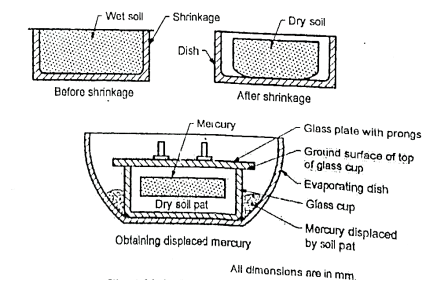
Fig.1.15: Shrinkage limit apparatus


Determination of Unit Weight:
Following methods are generally used to determine the field density of soils
Core cutter method

ρ=  (g/cm3)
(g/cm3)
Bulk unit weight, r= 9.81 ρ kN/m
Where w=water content
The core-cutter is shown in Fig.
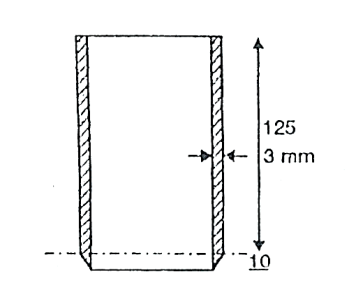
Fig.1.16: Core cutter

Fig.1.17: Dolly
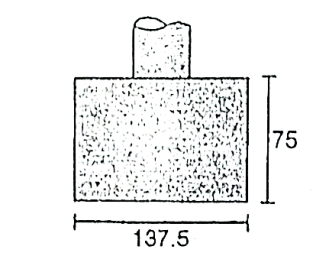
Fig.1.18: Rammer
Procedure:
Key Takeaways:
Table: Suffixes and prefixes
Soil type | Prefix | Subgroup | Suffix |
Gravel | G | Well graded | W |
Sand | S | Poorly graded | P |
Silt | M | Silty | M |
Clay | C | Clayey | C |
Organic | O | WL<35% | L |
|
| 35<WL<50 | I |
Peat | Pt | 50<WL | H |
Key Takeaways:
The unified classification is based on the airfield classification system that was developed by A. Casagrande. The system is based on both grain size and plasticity properties of the soil and is therefore, applicable to any use.
References: